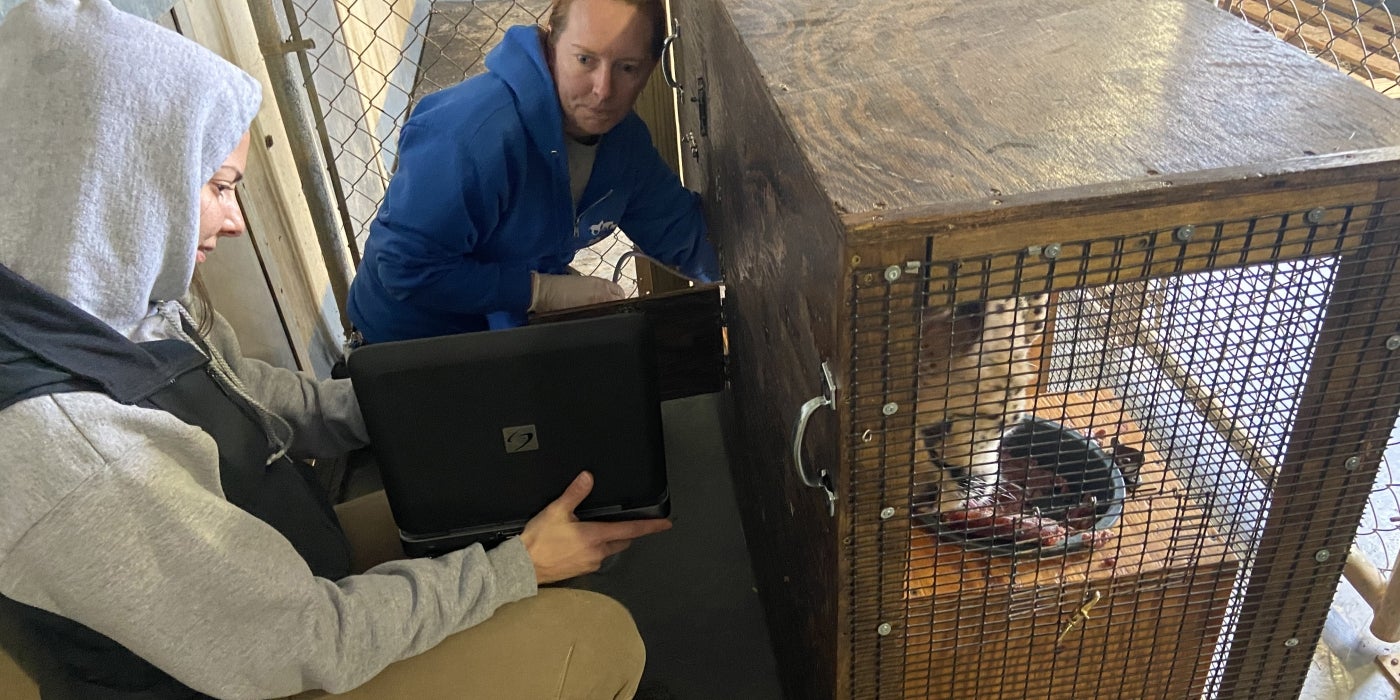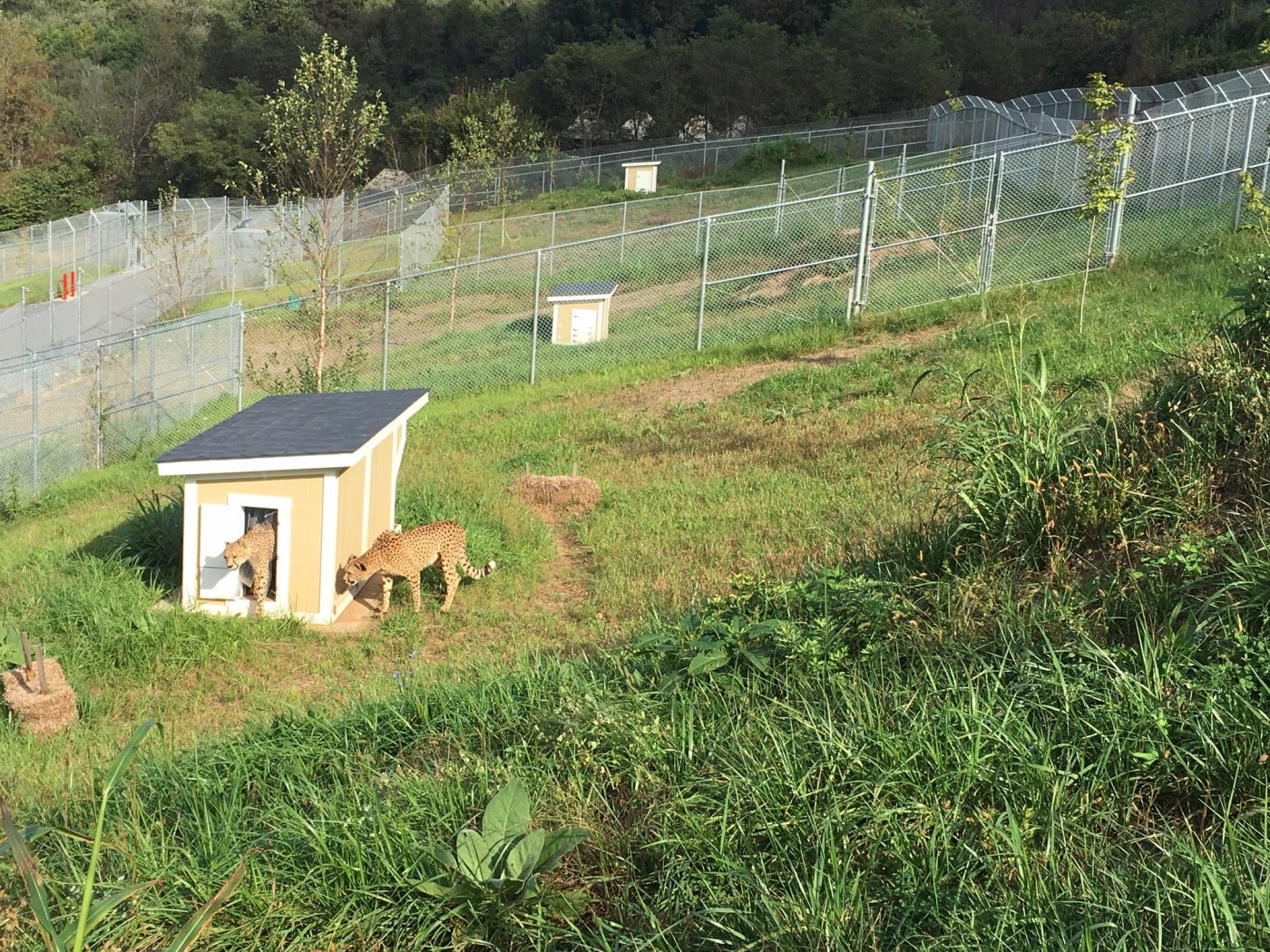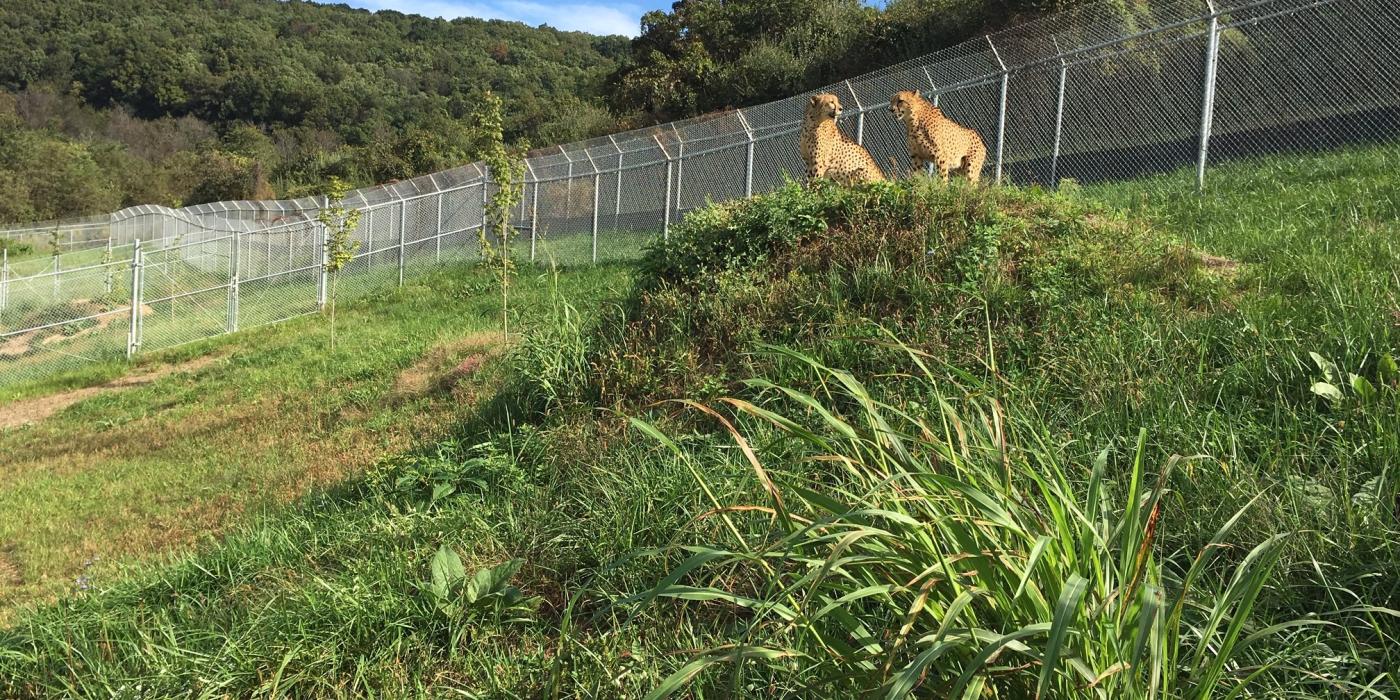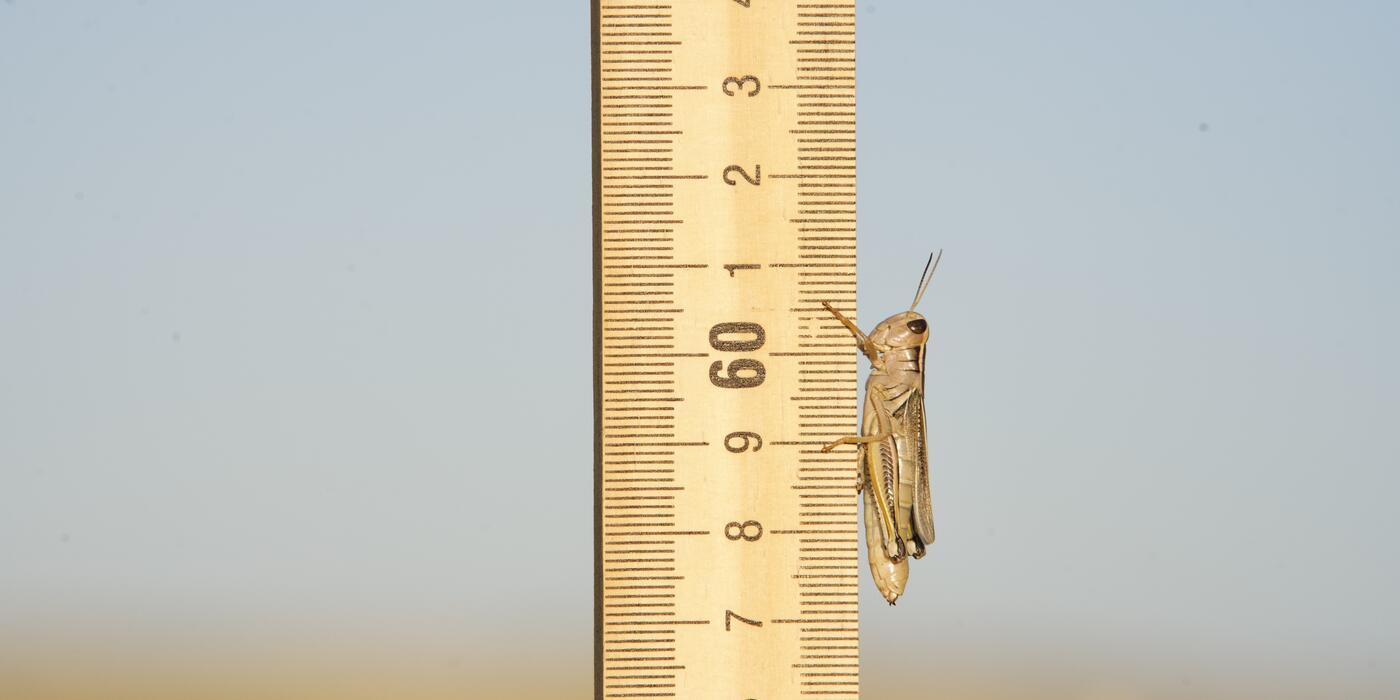Preparing for Cheetah Cubs
Here at the Smithsonian Conservation Biology Institute in Front Royal, Virginia, the carnivore team is gearing up for a very special arrival: cheetah cubs! As one of 10 facilities in the Cheetah Breeding Center Coalition, we study the behavior, biology, health and reproduction of these rare cats. The central goal of these facilities is to crack the code on producing cubs. According to the Association of Zoos and Aquariums' Species Survival Plan for cheetahs, we need about 40 surviving cubs every year in order to maintain a sustainable population.
To accomplish that task, however, is more challenging than one might think! Here at SCBI, we have 26 individuals, which is a large population. We have been fortunate to study this species for many years, and from that research, we know that giving cheetahs multiple mate options and more privacy greatly improves the odds of a natural breeding success. The first successful embryo transfer, or in vitro fertilization, was recently performed at the Columbus Zoo and Aquarium by two of our scientists, Drs. Adrienne Crosier and Pierre Comizzoli.

One of our females, 5-year-old Echo, joined our breeding program in June 2016 from White Oak Conservation Center in Florida. She is a very feisty and confident female! Her temperament could have made it challenging to pair her with a mate. Luckily, she naturally bred with our 4-year-old male, Scott, in early January.
As part of SCBI’s enrichment and training program, we teach our cheetahs behaviors that enable them to voluntarily participate in their own veterinary care. To ask for these behaviors, we cue the cats with a combination of hand signals and voice commands. Many of our animals are trained to voluntarily receive injections (including vaccines), stand still for radiographs, accept flea and tick medication applications, and present their tails for blood draws and blood pressure readings. They always have the choice to participate or walk away, but participation comes with rewards—namely, their favorite foods!
Part of the training process is knowing each individual’s likes and dislikes. Cheetahs are very serious about feeding time, which is advantageous to us. Some like getting chunks of meat, while others like bloodsicles (a frozen “popsicle” made from beef blood). One of our females, Carmelita, was hand-raised and enjoys interacting with keepers. She will eat her entire diet as we feed it to her through the fence from a spoon. Echo, though, seems to like bloodsicles best.
Ultrasounds are another training technique in our toolbox. Typically, cheetah gestation lasts around 90 days. However, we do not know for sure if a female is pregnant or not until around day 60. Up until that point, females can experience a false pregnancy, or pseudopregnancy. Day 60 (or thereabout) is the earliest time our veterinary team is able to view a fetus’ skeleton calcification on a X-Ray. With ultrasound, though, we can see them much earlier. Having a definitive answer to “is she or isn’t she” helps inform the next steps for our team: do we try to breed her again (if pseudopregnant), or do we prepare her birthing habitat (if pregnant)?
Whether cats experience a pregnancy or pseudopregnancy, the hormones that are present make them hungry and, often, a little calmer. When we initially fed Echo in the ultrasound crate, she was so comfortable that she sat down. Since she needed to stand in order for us to access her abdomen, we came up with a clever solution that wouldn’t spook Echo but kept her in the ideal position. We modified the crate by adding an item that was familiar to her, a bowl holder, and positioned it just so. This meant she had to step over the device to fully enter the crate. It successfully dissuaded her from sitting or lying down!
Once she was reliably standing in place, we began phase two of our training. The first day, I opened a small access door in the crate and lightly touched her abdomen to see how she would fare. She was more interested in her food than in what I was doing—a very positive sign. The following session, I applied a bit of pressure with my hand. Once again, she was laser-focused on the food in front of her. For the final step, we borrowed an old ultrasound machine from the vet team. In working with cats, especially, it is important to desensitize them to the equipment that will be used for the procedure. We put gel on the probe and applied steady pressure to her abdomen while she ate. Echo was a champ!
When the day came for the real ultrasound, Echo was ready. On Feb. 26, our veterinarians spotted at least two fetuses on the screen. This was confirmed March 2, when a radiograph revealed the outlines of three (possibly four) cubs! While this did not give us a huge window of extra time to plan, it did help us to confirm her pregnancy sooner than the radiograph alone. Based on her Jan. 4 and 5 breeding, that placed her birth window between April 2 and April 10.

To prepare for the cubs’ arrival, we moved her to a new enclosure that is a bit more secluded. We also added a shade cloth to the fence to offer her a little more privacy from her neighbors. As I mentioned earlier, having options is incredibly important to cheetahs, and that extends to cubbing dens, too. Echo has at least three denning options. These dens are equipped with closed-circuit cameras that enable us to remotely monitor Echo and, eventually, her cubs.
On April 1, Echo’s appetite decreased, which signaled to us that we could have cubs on the ground very soon. Be sure to check the Smithsonian’s National Zoo’s website for news that they have arrived!
This story appears in the April 2020 issue of National Zoo News.
Related Species:


